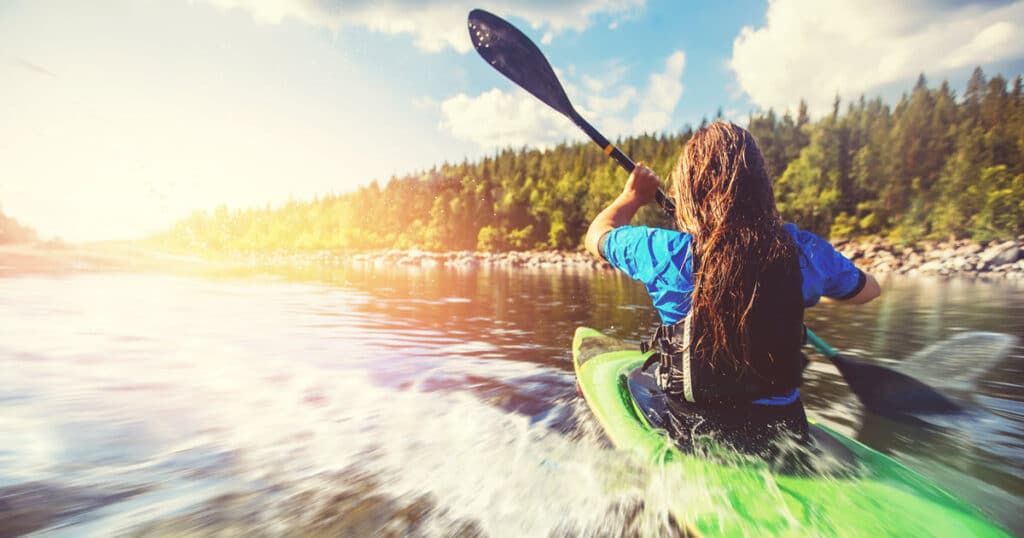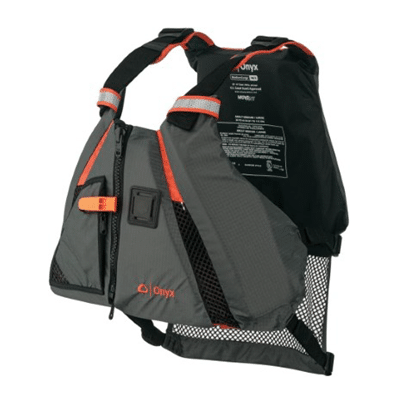Are you thinking about taking up kayaking? Maybe you’ve seen exciting videos of kayakers enjoying themselves in the great outdoors, and you are curious about trying this exciting activity for yourself. As a beginner, however, you will have to start small. You may have a friend who is an experienced paddler that can show you the ropes. Or you may decide to take a course with an instructor before getting your paddle wet. Either way, it’s likely that you have some questions, including what is the average kayak speed?
How fast will you go, and how much of the lakes, streams, or ocean coastline near your home will you be able to explore by kayak in a day?
The average kayak speed is about 3 mph (miles per hour). This average speed is close to that of a canoe, but if you’re an experienced kayaker, you may go much faster than this. There are many variables that affect how fast your kayak will move through the water.
Let’s explore some of these now.
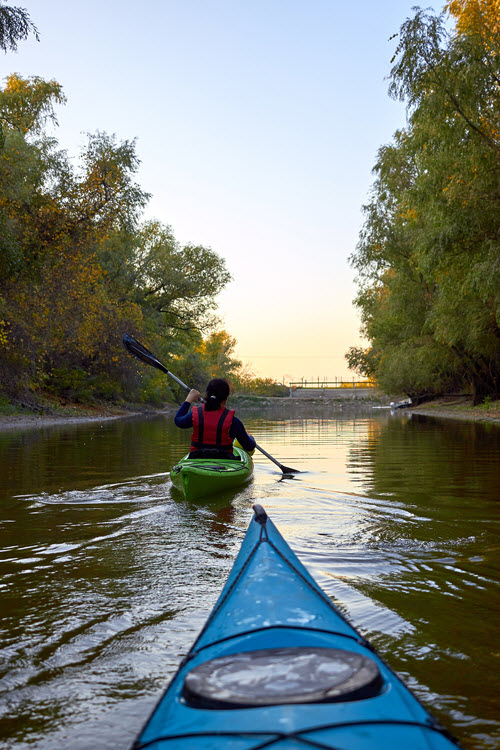
Factors that Can Impact a Kayak’s Speed in the Water
There are three primary factors which will determine the average speed of your kayak in the water. These include:
- Environmental Conditions,
- Kayak Hull Design, and
- The Skill of the Kayaker
Let’s explore each of these factors that can increase or inhibit a kayak’s speed in the water.
Environmental Conditions
Environmental conditions that will impact how fast, or slow, your kayak moves in the water includes water conditions, as well as the weather.
If you’re kayaking on tranquil waters without any powerful currents, you should find your kayak moves through the water more speedily than it would if conditions weren’t so peaceful.
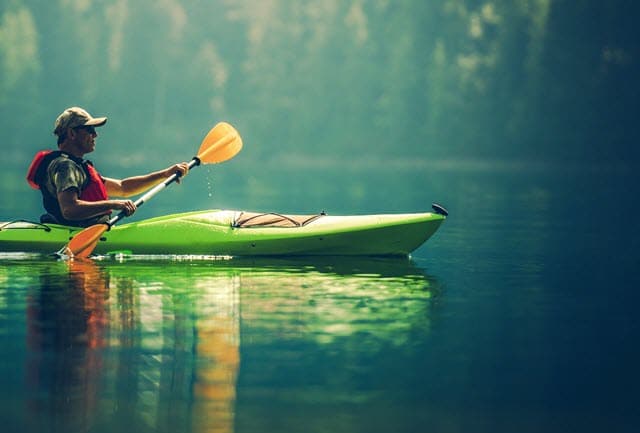
When it comes to windy weather, how it affects your kayaking speed depends on which direction the wind is blowing. If you’re moving your kayak in the same direction as the wind, it may help you move more quickly.
However, for obvious reasons, if you’re trying to travel against it, your speed will slow down significantly.
A kayak is often able to reach 5 mph (miles per hour) if it’s traveling in the same direction as a brisk wind and the current. But your speed may slow by up to 2 mph if you’re paddling into a heavy wind.
Kayak Design
Differences in kayak design can impact how fast your kayak can move through the water.
When you look at racing kayaks, you’ll notice they have a longer and narrower design than other types of kayak. That is because this streamlined design allows the kayak to achieve better speed. It’s like the difference between cutting steak with a steak knife and a butter knife. Either will work, but one will deliver a better result (and get the job done faster).
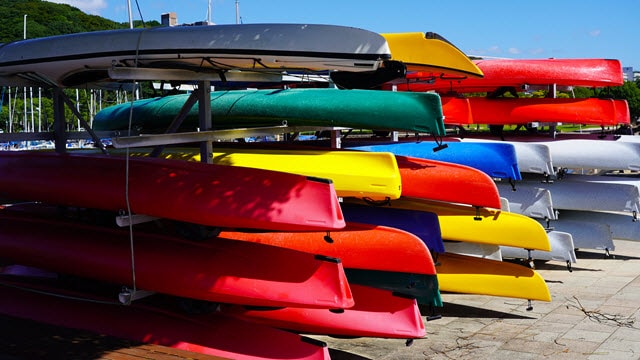
Different kayak brands manufacture their hulls in different ways, with some choosing to prioritize speed and efficiency. Others manufacture wider, more stable vessels for recreational and less-experienced paddlers.
Sit-on-top kayaks are comparatively slower than most sit-in kayaks.
The kayak weight also plays a role. This includes how much cargo, if any, you have in the kayak, and how much the craft weighs.
Kayaker Skill
Of course, the skill, experience, and strength of the kayaker also plays a significant role in your kayak’s speed. As the kayaker’s muscle strength and physical agility are important in paddling, these are very significant factors which will help determine the average kayak speed.
Core strength is especially important, as you use the muscles of your core, as well as your arms, in the paddling motion.
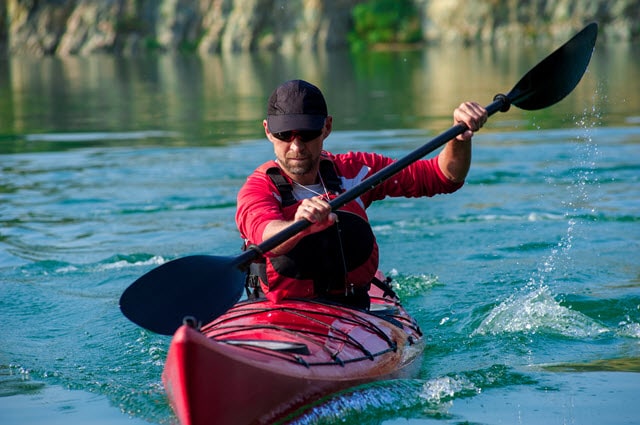
If you want to do well with kayaking, you will need to understand and adopt the right kind of posture and paddling movements. The right sitting position is essential not only for speed but also for preventing muscle strain, soreness, and injury.
Proper Positioning and Paddling Form
When sitting in your kayak, make sure you’re sitting in an upright position. When it comes to your lower body, make sure your feet (the balls of your feet) are firmly placed against the braces (otherwise known as foot pegs).
Bend your knees so that they’re positioned in a diamond-like shape. If you have a kayak with a cockpit, find the thigh braces. Position your thighs correctly against these braces. If you have a sit-on-top kayak, position your thighs and calves so they’re against your kayak, keeping them firmly braced.
The reason core and torso muscle power is so important in kayaking is the rotating motion necessary for paddling. When you have a strong core, you can paddle much more efficiently and with more power.
Never try to just rely on the strength of your arms when paddling. You need more than that, and a strong core will give you the muscle power you require.
Formula for Figuring Out Kayak Speed
Many kayakers use a mathematical formula for figuring out the maximum speed at which their kayak will be able to travel. Find the waterline and hull of your kayak, and measure how long the hull is at that line.
Find the square root of your hull length, and then multiply this number by 1.34.
The result should give you the kayak’s maximum speed under ideal conditions.

Frequently Asked Questions About Kayak Speed
Now let’s take a look at some common questions about kayak speed.
I’ll try to provide some quick and accurate answers for you.
How Does Average Kayak Speed Compare to Average Walking Speed?
The average walking speed more most people is around 3 or 4 miles per hour. This means that kayaking has a similar average speed. As mentioned earlier, however, your skill as a kayaker, as well as factors such as environmental conditions and kayak design, will affect whether you reach or exceed this speed.
Experienced kayakers with racing kayaks and with the right knowledge and experience may reach significantly higher speeds of about 5 or 5.5 miles per hour.
How Fast Can a Beginner Kayaker Move Through the Water?
If you want to learn how to kayak, you’ve got to be patient. If you expect to just jump in your kayak and move through the water like a professional, you’ll be disappointed.
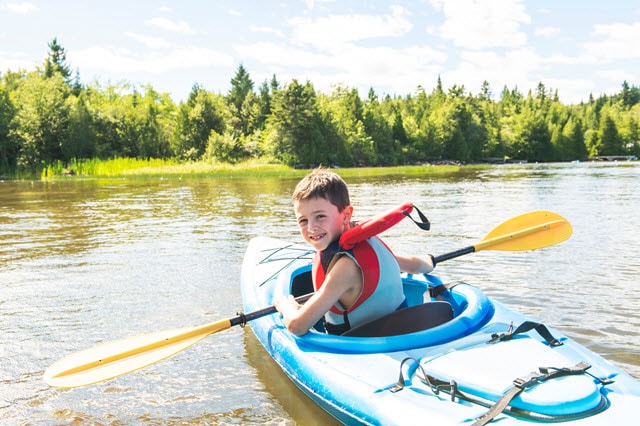
Take lessons with a certified instructor before you try to go kayaking by yourself, and make sure your swimming skills are strong enough that you will be able to save yourself if you fall into the water. Many beginning kayakers end up in the water at some point, so this is essential.
As a kayaking beginner, expect to move slowly. You may not even get close to 2 mph (miles per hour) as you just get started. In fact, you may even have trouble keeping your kayak upright!
That’s where a professional instructor comes in. There’s a real knack to many of the basics of kayaking, and it’s nowhere near as easy as it looks.
How Long Will It Take You to Kayak One Mile?
You’ll remember we talked about how there are several different factors that impact how fast or slow your kayak will move. As a result, these factors come into play when determining how long it will take your kayak to move one mile through the water.
When it comes to averages, however, we can say that if there are ideal weather and water conditions, and if the kayaker has some experience and average-level skills, they will probably be able to travel one mile in between 20 minutes and half an hour.
What is the Maximum Speed of Professional Racing Kayakers?
The speeds professional racing kayakers can reach are in a different universe than what recreational kayakers can ever hope to achieve. If you’re still curious and want to find out how fast a professional racing kayaker can move their watercraft through the water, let’s take a look at it here.
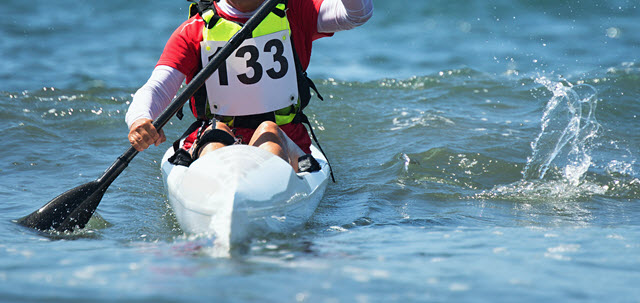
In most cases, a professional racing kayaker may move their watercraft as fast as 5 mph (miles per hour). However, there have been record-setting cases where racing kayakers have achieved much higher speeds.
Believe it or not, the world record for the fastest kayaking speed ever achieved is over 19 mph (miles per hour).
Now That You Know the Average Kayak Speed…
Kayaking can seem a bit intimidating if you’ve never tried it before, but you may find it’s just the recreational activity you’ve been looking for.
If you’re interested in kayaking, take a short kayaking course from a qualified instructor. As a beginner, you should restrict your kayaking to peaceful waters and sunny weather.

Now you know more about kayaking, including the average kayak speed, are you excited about getting started with this activity.
As long as you have strong swimming skills and take the time to complete a kayaking course with a professional instructor, you should be all set to get started learning this exciting watersport. Just start slow and be patient.

